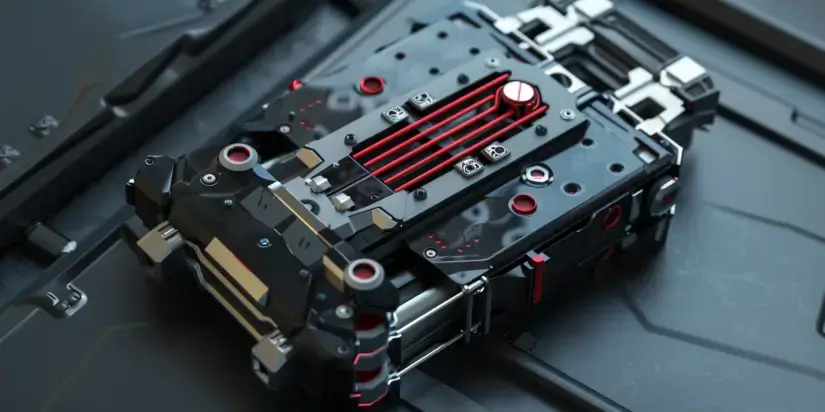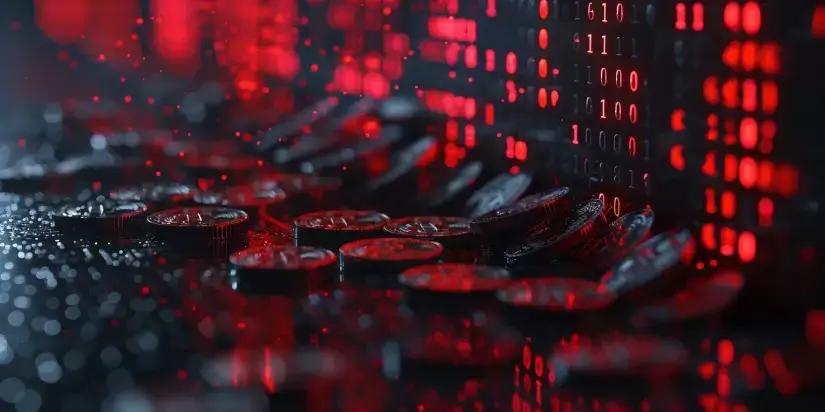[key_takeaways]
- Grasping the basics of DeFi wallets can empower users to manage their crypto assets more efficiently.
- The recovery phrase is crucial for regaining access to crypto assets if the wallet software fails.
- Engaging the customer support team is critical when facing issues with transactions or wallet access.
- Enhancing security by double-checking wallet addresses and transaction details can prevent the loss of funds.
[/key_takeaways]
In the world of decentralized finance (DeFi), incidents where more money gets stuck in a DeFi wallet app are increasingly common, causing frustration and financial uncertainty.
This situation often stems from network congestion, errors in transaction details, or security breaches.
Recent studies indicate that user errors, such as incorrect wallet addresses or failed transaction signatures, account for a significant portion of these issues.
Understanding the mechanics behind these problems is essential for anyone engaged in crypto transactions, whether they're seasoned traders or newcomers to the digital currency space.

What does stuck mean in the context of a DeFi wallet?
In the context of a DeFi wallet, "stuck" typically refers to a transaction that hasn't been processed or completed as expected.
Frequently, users encounter error messages in their DeFi wallet app when funds fail to transfer, which can indicate problems ranging from network issues to potential scams.
This often occurs due to network congestion, where high volumes of transactions overwhelm the blockchain, slowing down confirmation times.
As a result, the wallet app may show that the funds are still pending or haven't been updated, leaving the user unable to access or utilize their crypto assets.
Another common cause of transaction stuckness is an insufficient gas fee. Each transaction on a blockchain requires a fee, known as “gas,” to be processed.
If the gas limit set is too low compared to what the network currently requires, miners may prioritize other transactions, resulting in a prolonged pending status.
Users need to ensure that they set a competitive gas price or use wallet features that adjust this fee automatically to avoid such delays.
What are the main reasons why money gets stuck in a DeFi wallet?
Understanding the common issues that lead to funds being temporarily inaccessible can help you navigate and mitigate potential problems with your DeFi transactions.
Network congestion
One of the most prevalent reasons for money getting stuck in a DeFi wallet is network congestion. When too many transactions are submitted simultaneously, the blockchain can become overloaded.
This congestion can delay the processing of transactions, including those involving DeFi wallets, as they wait in a queue to be confirmed by miners. During peak times, this can lead to significant delays, causing funds to appear stuck.
Incorrect gas fees
Another critical reason involves setting an incorrect gas fee. Every transaction on a blockchain network requires a gas fee, which compensates miners or validators for the energy and computational power needed to process the transaction.
If the gas fee set is too low, especially during times of high demand, the transaction may not be attractive enough for miners to prioritize and process, resulting in funds that remain unconfirmed.
Smart contract failures
Transactions can also get stuck due to issues with smart contracts in DeFi platforms.
If there is a bug or flaw in the contract's code, or if the user does not meet all the conditions required by the contract for execution, the transaction may not go through.
This can happen if the contract relies on external factors or if the user's contract execution parameters do not match.
📚Read More: Essential Guide to Protecting Your Crypto

How do I get my money out of a DeFi wallet?
Follow this straightforward guide to safely and efficiently retrieve your funds from a DeFi wallet.
Step 1: Verify your wallet and network status
- Check network congestion: Before initiating a transaction, check the blockchain network's current status. If there is high congestion, consider waiting until it clears to avoid transactions getting stuck.
- Ensure wallet connectivity: Make sure your DeFi wallet app is connected to the internet and accessing the blockchain network without issues. A disconnection or poor connection can hinder transaction processes.
- Update wallet software: Regular updates can fix bugs that may cause transaction failures. Ensure your wallet app is up to date to improve its performance and security.
Step 2: Adjust transaction settings
- Set appropriate gas fees: Adjust the gas price and limit according to the current network demands. This will help your transaction get prioritized and processed faster by the miners.
- Double-check the recipient’s address: Always verify the recipient's address before sending funds. Incorrect addresses can lead to irreversible losses.
- Use acceleration services if available: Some networks offer transaction acceleration services for a fee. If your transaction is time-sensitive, consider using these services to speed up the process.
Step 3: Initiate the transfer or withdrawal
- Transfer funds to a trusted exchange: If you are unable to perform direct transactions from your DeFi wallet, consider transferring your assets to a reputable exchange where you can manage them more flexibly.
- Contact customer support: If you experience issues during the transaction, contact the customer support of your wallet provider. They can offer guidance and possibly assist in resolving transaction delays.
- Monitor the transaction: After initiating the withdrawal or transfer, keep track of the transaction status through blockchain explorers. This will confirm when the process is completed and ensure your funds reach their destination.
📚Read More: How to Unfreeze Cryptocurrency (Best Ways)
Peace of mind for your crypto & fiat funds: Discover swissmoney
In digital finance, maintaining security and control over crypto and fiat funds is paramount. swissmoney offers a robust solution for those seeking reliability and flexibility in managing their financial assets.
Here's how swissmoney ensures peace of mind for its users:
- Comprehensive asset management: swissmoney provides an all-in-one platform that seamlessly integrates the management of cryptocurrency and traditional currency. Users can easily switch between crypto and fiat, ensuring they can manage their assets as market conditions change.
- Advanced security protocols: Security is a top priority at swissmoney. The platform employs state-of-the-art security measures, including KYC procedures, encryption, two-factor authentication (2FA), and biometric user verification, to ensure that all accounts and transactions are protected from unauthorized access.
- Reliable customer support: swissmoney's dedicated customer support team is available to help users with any issues or questions they might have about their accounts or transactions. Whether it's a query about a transfer or a request for assistance with account setup, the support team is there to ensure a smooth and secure user experience.
How can I be sure my funds are safe even if I can't access them right now?
Having temporary access issues with your DeFi wallet can be unsettling, but several mechanisms ensure the safety of your funds during such times.
First, understand that most wallets are non-custodial, meaning that you retain control of your assets through your private keys and recovery phrases.
As long as you have not compromised these credentials, your funds are secure.
Additionally, most blockchain networks are built with robust security measures that make transactions and balances immutable once confirmed on the blockchain.

What steps can I take to prevent this from happening again?
To minimize the chances of experiencing inaccessible funds in your DeFi wallet in the future, consider the following proactive steps:
Regularly update your wallet software
Keeping your wallet application updated is crucial. Updates often include security enhancements and bug fixes that prevent potential vulnerabilities.
Regular updates ensure that your wallet functions optimally and remains compatible with the blockchain it operates on.
Optimize your transaction fees
Adjust the transaction fees accordingly during periods of high network traffic. Setting higher gas prices can help miners prioritize your transactions, reducing the chances of them getting stuck.
Many wallets offer features that help estimate the appropriate fee based on current network conditions.
Enhance your security practices
Strong security practices are essential. Always double-check addresses before sending funds, and store your private keys in hardware wallets or secure key management solutions.
If your wallet supports two-factor authentication (2FA), enable it on transactions.
By adopting these strategies, you can enhance the security and accessibility of your funds in your DeFi wallet, reducing the likelihood of facing similar issues in the future.
📚Read More: How to Stay Safe from Bitcoin Scams And Frauds
Conclusion
Navigating the complexities of decentralized finance wallets requires understanding and vigilance, but the rewards and control they offer over personal finance are unparalleled in the traditional financial system.
By staying informed about network conditions, optimizing transaction settings, and maintaining robust security practices, users can significantly enhance the security and efficiency of their DeFi wallet interactions.
Staying updated with the latest developments and security practices will continue to be essential for anyone looking to maximize the potential of their digital assets.
As you continue to navigate the complex DeFi landscape, be wary of scams and always verify the platform's credibility and the accuracy of the wallet address before making any deposit or withdrawal request.
FAQs
Can a DeFi wallet be frozen?
Unlike traditional bank accounts or some centralized crypto exchanges, DeFi wallets are generally non-custodial, meaning they cannot be frozen by an external entity.
However, interactions within certain DeFi platforms may be affected by smart contract rules or network-wide decisions, which can sometimes restrict access to funds under specific conditions.
Why can't I withdraw from my blockchain DeFi wallet?
Withdrawal issues can stem from various reasons, such as insufficient gas fees, smart contract errors, or network congestion.
Ensuring that the wallet is updated and all transaction details are correctly entered, including adequate gas fees, can help resolve these issues.
Why is my DeFi wallet not showing my balance?
This can occur due to network delays, wallet sync issues, or errors in displaying the data from the blockchain.
Refreshing the wallet, ensuring it's connected to the correct network, and sometimes re-importing your wallet using your recovery phrase can help solve this problem.
How do I recover my crypto DeFi wallet?
Recovery typically involves using your private keys or recovery phrase. It’s crucial to store this information securely, as losing it can permanently prevent you from accessing your assets.
If you encounter issues, consulting the wallet's support team can provide guidance based on your specific situation.
Is a DeFi wallet safer than an exchange?
DeFi wallets, which give users complete control over their private keys, can offer enhanced security compared to centralized exchanges that control your keys.
However, this means the user must take full responsibility for their security measures.
What are the key differences between DeFi wallets and centralized exchange wallets?
The primary difference is the custody of assets. DeFi wallets are non-custodial, meaning the user retains full control of their private keys and, thus, their funds.
Centralized wallets, on the other hand, are controlled by a third party (the exchange), which holds the keys.
📚Read More: Centralized vs. Decentralized Crypto Exchanges
What are the risks involved in using DeFi platforms?
DeFi platforms often carry risks like smart contract vulnerabilities, impermanent loss, and liquidity issues.
These platforms operate without a central authority, which means there is no fallback if something goes wrong due to a bug or an exploit in the system.
How do I link my DeFi wallet to an exchange account?
To link your DeFi wallet to an exchange account, navigate to the 'account settings' in your wallet app, select 'link account,' and enter your exchange account details.
This process enables you to easily transfer and manage your crypto assets across platforms.

